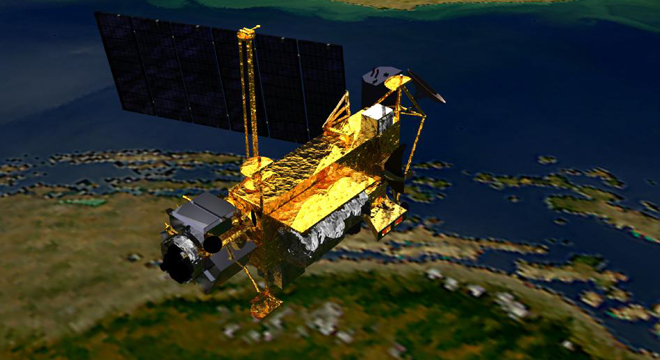Nobody knows exactly where it will land, but a decommissioned, 6-ton NASA satellite climate research due to crash land on Earth this Friday, September 23, has been spotted on it’s way down by an amateur French astronomer, Space Weather reports.
You can also track the satellite’s path using a web tool developed by N2YO for Fox News, although it is currently down due to heavy demand. NASA plans to provide updates with increasing frequency over the coming days, and at the 24, 12, six and two hours before it hits, all of which will be posted here.
At the same time, there is a seemingly growing misunderstanding over the exact odds that the UARS satellite could strike a person, any person, which NASA has stated are 1 in 3,200, but which actually equates to one person being hit if the satellite were to crash 3,200 times.
First, regarding the satellite spotting, which actually occurred on Sept. 15: That was the work of French astrophotographer Thierry Legault, an engineer by training who is renowned for amazing, ground-captured 3D videos of the International Space Station and his invention, along with fellow hobbyist Emmanuel Rietsch, of a spy satellite tracker made from a modified consumer telescope.
His video of UARS and subsequent screengrab show the satellite in low-earth orbit, 156 miles above Northern France, depicting it as a grainy, blurry gray blob tumbling end over end, with the satellite’s antenna occasionally visible. It’s not exactly the most sharp imagery, you’ll gather, but it is strangely hypnotic and vaguely ultrasound-like.
“The satellite is tumbling, perhaps because of a collision with satellite debris a few years ago,” Legault writes on his website.
Meanwhile, according to the latest update from NASA, the satellite is expected to crash land on Sept. 23, “U.S. time.” As NASA points out: “The time reference does not mean that the satellite is expected to re-enter over the United States. It is simply a time reference. Although it is still too early to predict the time and location of re-entry, predictions of the time period are becoming more refined.”
In fact, the latest models of where the satellite could land still show it striking somewhere between the 57 north and south latitudes, which is basically anywhere North of Antarctica and south of Greenland. NASA burned up all the fuel on the satellite to get it into low earth orbit and no longer has control over its flight, making it difficult to say with any certainty where it will fall until just hours before it hits the ground. Even up to two hours before, there will still be a 6,000 mile range where it could strike.
What NASA is fairly certain of is that the satellite, predominantly composed of aluminum, will mostly break up in earth’s atmosphere and that 26 pieces will likely survive re-entry weighing 1,170 pounds, including one 300-lb. section. These, the agency predicts, will be scattered over a 500-mile long trail. Also, that the pieces will land harmlessly in the ocean or some uninhabited expanse in, say, Siberia.
That’s because although 1 in 3200 might sound like a bit too close of odds, that refers to the NASA’s risk assessment that the satellite could hit anyone on Earth. Multiplied by the population of nearly 7 billion people, and the odds that any specific individual will get hit are actually 1 in 21 trillion, as NASA took pains to point out in a press conference on Sept. 9.
But if you want to see what an uncontrolled satellite re-entry looks like up close, you can live it vicariously through the following simulation video created by aerospace software company Analytical Graphics.
Correction: This post originally misstated the odds of the satellite hitting a specific individual at 1-in-21 billion. The figure has since been corrected to 1-in-21 trillion. We regret the error.









